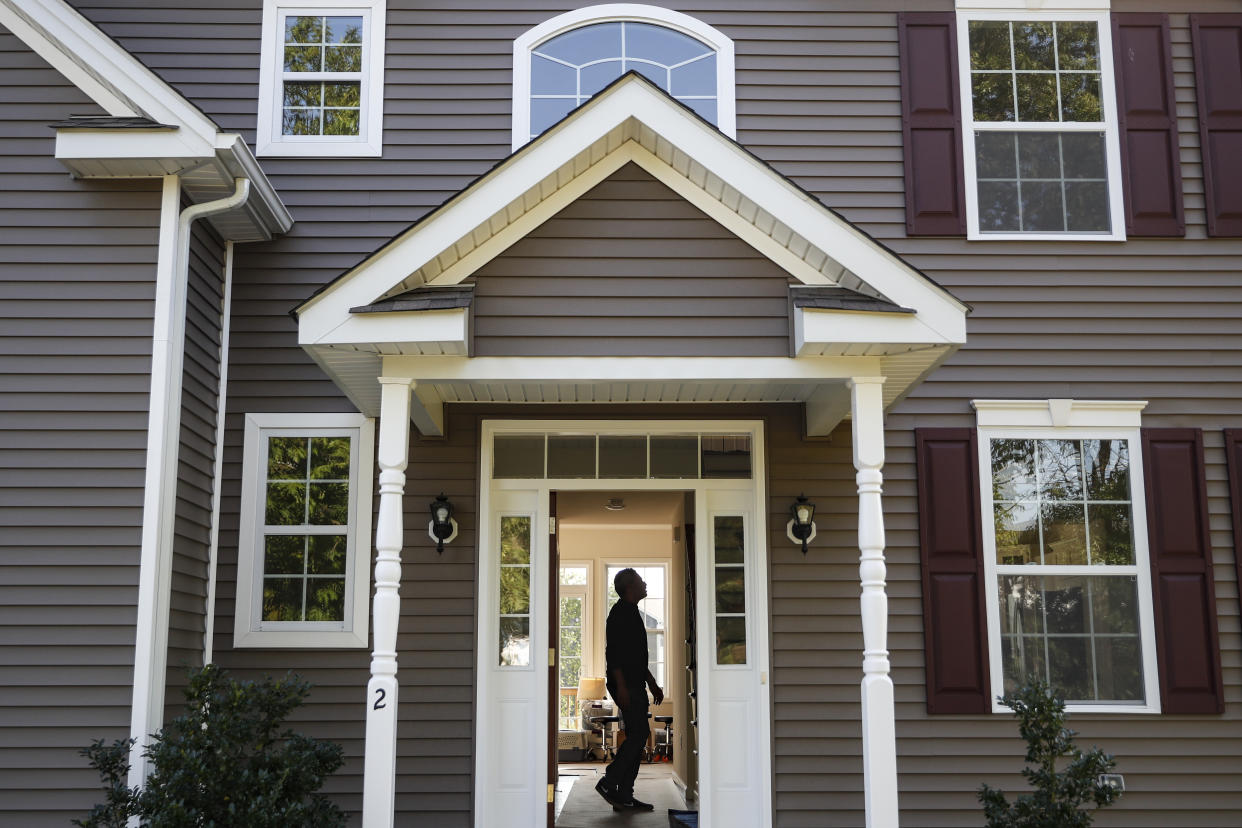Map: Racial homeownership gap widened in last 10 years, new data shows
The racial gap in homeownership remains real and significant in the United States according to a new report from the National Association of Realtors, "Snapshot of Race and Home Buying in America."
More Americans own a home than they did 10 years ago, with the homeownership rate rising to 65.5% in 2021 compared to 64.7% in 2011.
But Black households continue to see their ownership share lag the broader economy.
Data from the National Association of Realtors shows the gap between Black homeownership rates and the homeownership rate of any other race or ethnic group was wider at the end of 2021 wider than in 2011, according to the latest available data.
Homeownership among Black households stood at 44% at the end of 2021, up just 0.4% from a decade earlier, the smallest percentage-point increase of any racial group.
"Black homeowners are more squeezed than any other race ethnic group," Nadia Evangelou, senior economist and director of real estate research at the National Association of Realtors, told Yahoo Finance.
Evangelou also noted 30% of Black homeowners spend more than 30% of their income on housing.
Regionally, South Carolina, Delaware, and Mississippi were the states that saw the highest rate of Black homeownership, standing at 55%, 54%, and 54%, respectively.
In contrast, North Dakota, South Dakota, and Alaska showed the smallest fraction of Black households. The rate of homeownership for Black Americans owning a home across U.S. states ranged from 15% to 55%.
"Black homeowners are cost burdened," Evangelou said.

In Wyoming, for example, Evangelou noted the median income of Black homeowners was below $60,000 in 2021 while the median value of homes these folks owned stood at $360,000.
However, Black Americans aren't the only race facing inequalities.
Hispanic Americans face similar disparities when owning a home, with the rate of homeownership for this group falling between 27%-67% nationwide. West Virginia, New Mexico, and Vermont had the highest home ownership rate for Hispanics in 2021.
For Asian Americans, in 23 states this group had a homeownership rate higher than the national rate of 62.8% in 2021, the report found.
Separately, for white households homeownership rates ranged from 50%-81% across the country, with Delaware, Mississippi, and South Carolina showing the highest homeownership rate.
Affordability challenges hit renter households
Wealth gaps are especially wide among households that are renters in the U.S.
Data from National Association of Realtors shows that 54% of Black renters spend more than 50% of their income on rent, while 22% of white renters spend this much of their pay on rent.
This same survey found that the average monthly rent was $1,050 for white households compared to $855 for Black renter households. In Hawaii, Vermont, California, Nevada, and Florida, the share of Black renters who are cost-burdened — or spending more than 50% of their pay on rent — stood at more than 60%.
And as rental costs are anticipated to rise, it is likely to become even more difficult for a Black renter household to save for a down payment.
About 17% of white renters can afford to buy a median-priced home with the typical mortgage rate near 6.5%, while just 9% of Black renters are likely to quality.
"There are disparities in the mortgage market… 20% of Black and 15% of Hispanic loan applicants were denied mortgages, compared to 11% of white and 10% of Asian American applicants," Evangelou said.
Looking ahead, Evangelou sees housing supply as a tool needed to shrink the racial housing gap.
"We need to make more homes," Evangelou said. "We need to have more inventory [of homes] that are in the price range for middle income buyers who can afford to buy."
Dani Romero is a reporter for Yahoo Finance. Follow her on Twitter @daniromerotv
Read the latest financial and business news from Yahoo Finance
Download the Yahoo Finance app for Apple or Android
Follow Yahoo Finance on Twitter, Facebook, Instagram, Flipboard, LinkedIn, and YouTube
